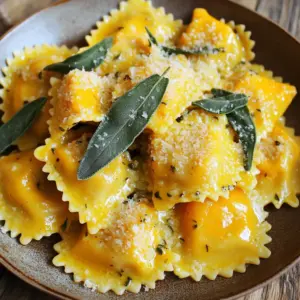
Creamy Pumpkin Sage Ravioli with Brown Butter
Indulge in a mouthwatering Creamy Pumpkin Sage Ravioli recipe that brings the flavors of fall to your table! Learn how to craft homemade ravioli filled with rich pumpkin and ricotta, all tossed in a brown butter sage sauce. It's a delightful dish that's perfect for any occasion. Click to explore the full recipe and impress your loved ones with this comforting and flavorful meal!